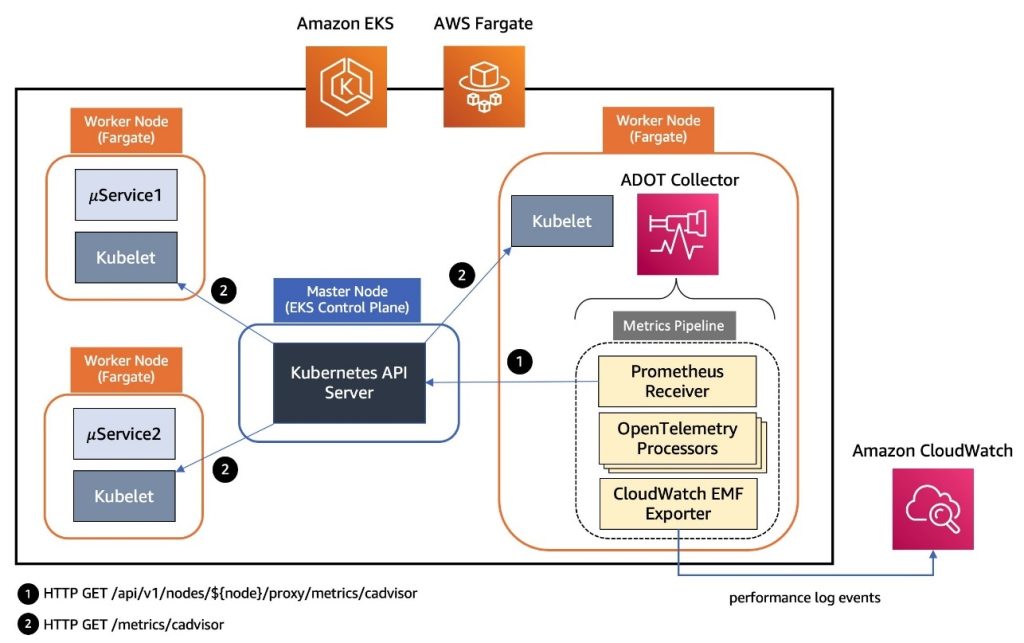AWS Architecture Blog
Category: Management Tools
How Zapier runs isolated tasks on AWS Lambda and upgrades functions at scale
In this post, you’ll learn how Zapier has built their serverless architecture focusing on three key aspects: using Lambda functions to build isolated Zaps, operating over a hundred thousand Lambda functions through Zapier’s control plane infrastructure, and enhancing security posture while reducing maintenance efforts by introducing automated function upgrades and cleanup workflows into their platform architecture.
Implement monitoring for Amazon EKS with managed services
In this post, we show you how to implement comprehensive monitoring for Amazon Elastic Kubernetes Service (Amazon EKS) workloads using AWS managed services. This solution demonstrates building an EKS platform that combines flexible compute options with enterprise-grade observability using AWS native services and OpenTelemetry.
How UNiDAYS achieved AWS Region expansion in 3 weeks
In this post, we share how UNiDAYS achieved AWS Region expansion in just 3 weeks using AWS services.
Top Architecture Blog Posts of 2024
Well, it’s been another historic year! We’ve watched in awe as the use of real-world generative AI has changed the tech landscape, and while we at the Architecture Blog happily participated, we also made every effort to stay true to our channel’s original scope, and your readership this last year has proven that decision was […]
How CyberArk is streamlining serverless governance by codifying architectural blueprints
This post was co-written with Ran Isenberg, Principal Software Architect at CyberArk and an AWS Serverless Hero. Serverless architectures enable agility and simplified cloud resource management. Organizations embracing serverless architectures build robust, distributed cloud applications. As organizations grow and the number of development teams increases, maintaining architectural consistency, standardization, and governance across projects becomes crucial. […]
Hybrid Cloud Journey using Amazon Outposts and AWS Local Zones
This post was co-written with Amy Flanagan, Vice President of Architecture and leader of the Virtual Architecture Team (VAT) at athenahealth, and Anusha Dharmalingam, Executive Director and Senior Architect at athenahealth. athenahealth has embarked on an ambitious journey to modernize its technology stack by leveraging AWS’s hybrid cloud solutions. This transformation aims to enhance scalability, […]
Deploy Stable Diffusion ComfyUI on AWS elastically and efficiently
Introduction ComfyUI is an open-source node-based workflow solution for Stable Diffusion. It offers the following advantages: Significant performance optimization for SDXL model inference High customizability, allowing users granular control Portable workflows that can be shared easily Developer-friendly Due to these advantages, ComfyUI is increasingly being used by artistic creators. In this post, we will introduce […]
Top Architecture Blog Posts of 2023
2023 was a rollercoaster year in tech, and we at the AWS Architecture Blog feel so fortunate to have shared in the excitement. As we move into 2024 and all of the new technologies we could see, we want to take a moment to highlight the brightest stars from 2023. As always, thanks to our […]
How Zurich Insurance Group built their Scalable Account Vending process using AWS Account Factory for Terraform
Introduction Zurich Insurance Group is a leading multi-line global insurer operating in more than 200 territories. Headquartered in Zurich, Switzerland, their main business is life and property and casualty (P&C) insurance. In 2022, Zurich began a multi-year program to accelerate their digital transformation and innovation through migration of 1,000 workloads to AWS, including core insurance […]
Journey to Cloud-Native Architecture Series #7: Using Containers and Cell-based design for higher resiliency and efficiency
In our previous Journey to Cloud-Native blogposts, we talked about evolving our architecture to become more scalable, secure, and cost effective to handle hyperscale requirements. In this post, we take these next steps: 1/ containerizing our applications to improve resource efficiency, and, 2/ using cell-based design to improve resiliency and time to production. Containerize applications […]









